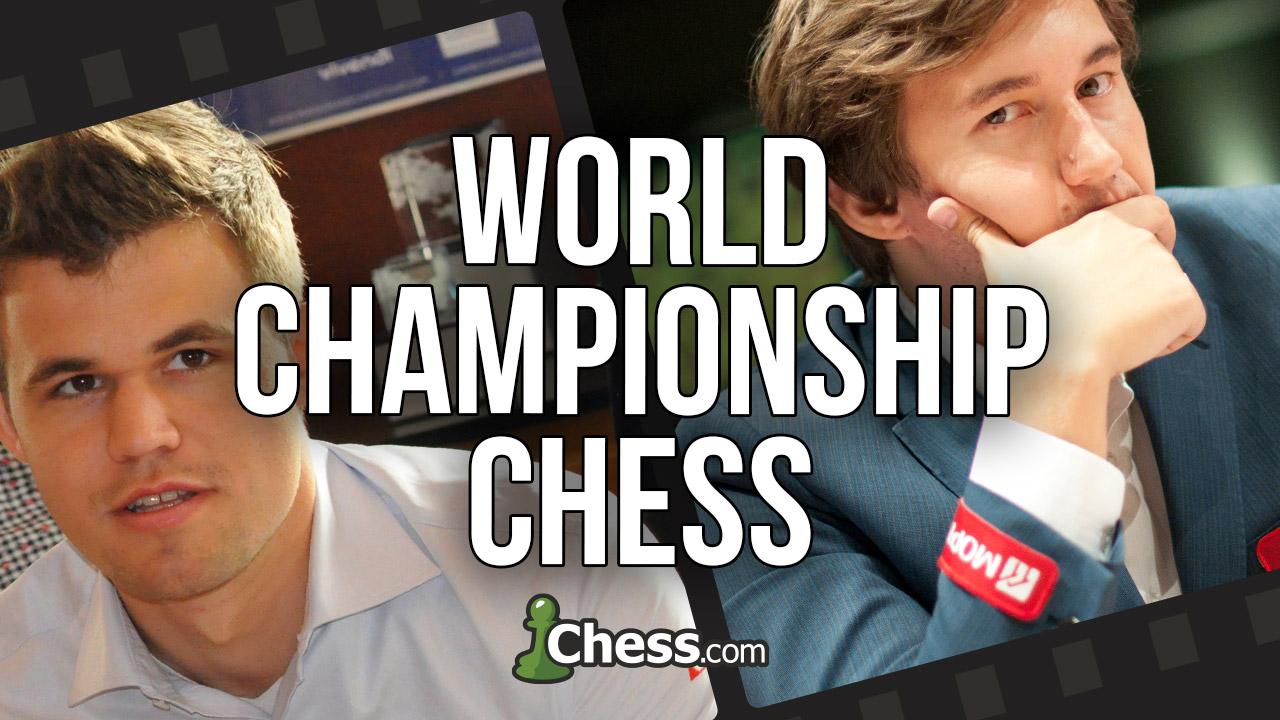
World Chess Championship 2016 | Carlsen vs Karjakin
The 2016 World Chess Championship between Magnus Carlsen and Sergey Karjakin was a true clash of champions. In this article, you will be find full game summaries, video analysis, and much more.
The match was equal from beginning to end, and it was decided on tiebreaks. (If you click on the titles of the games (G1,G2...) you will be taken to the explanation of each game.
| Players | G1 | G2 | G3 | G4 | G5 | G6 | G7 | G8 | G9 | G10 | G11 | G12 | T1 | T2 | T3 | T4 | T |
| Carlsen | ½ | ½ | ½ | ½ | ½ | ½ | ½ | 0 | ½ | 1 | ½ | ½ | ½ | ½ | 1 | 1 | 9 |
| Karjakin | ½ | ½ | ½ | ½ | ½ | ½ | ½ | 1 | ½ | 0 | ½ | ½ | ½ | ½ | 0 | 0 | 7 |
Game 1: Breaking the ice.
The first game of any match brings high tension and a battle of nerves. It is said in the media that Carlsen's opening choice of the Trompowsky was a light joke being that the match was in the United States and Donald Trump just became president, hence the "Trumpowsky." Perhaps this was to lighten the mood of the match.
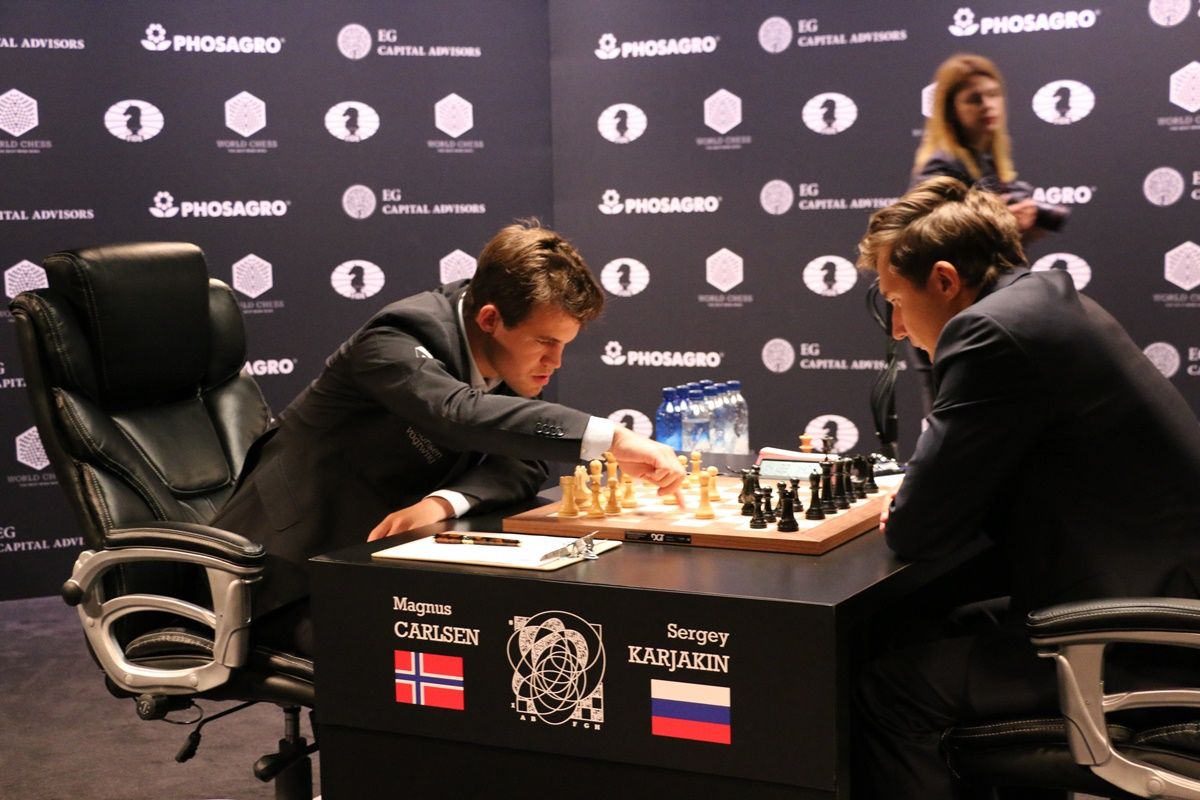
Carlsen removes a fleck of dust during game one.
Game 2: Another peaceful encounter.
In game two of the match, Karjakin employed the time honored Ruy Lopez. I think all of the chess fans around the world were expecting Carlsen to play the Berlin, but he chose 3...a6. This showed that Carlsen was in the mood for a fight, but a peaceful result was the outcome.
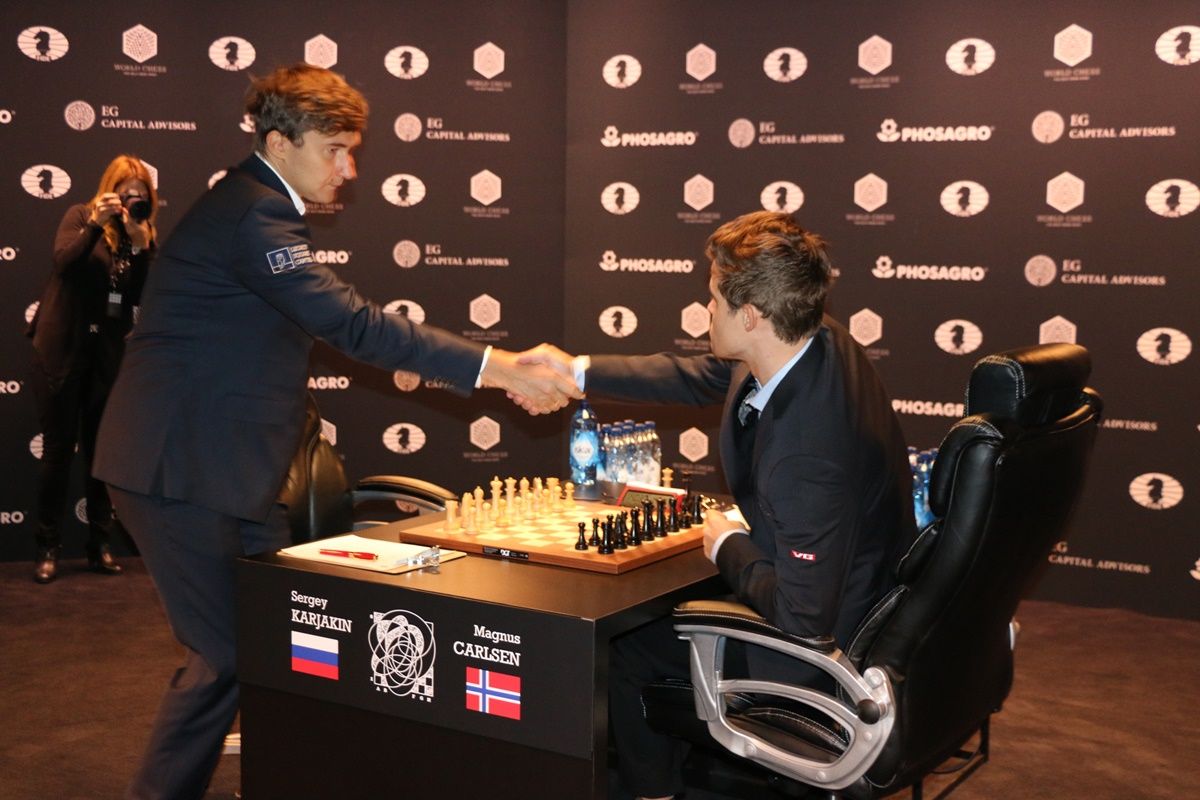
Karjakin and Carlsen with the customary pre-game handshake.
Game 3: Magnus pushes for the win.
Game three of the match put Carlsen in the drivers seat to test out the Ruy Lopez. Not surprisingly, Karjakin chooses the solid Berlin Defense to meet the opening. Carlsen pushed for 78 moves, was up a pawn, then a piece! But the end result was another draw.

Karjakin ponders his best defense against Carlsen.
Game 4: Marathon game with another draw.
Karjakin's defensive skills were put to the ultimate yest in game four's 94 move marathon game. Both players continued the Ruy Lopez theme, testing each other's ideas. Karjakin showed he knew how to sit patiently and accept that he had to play defensively.
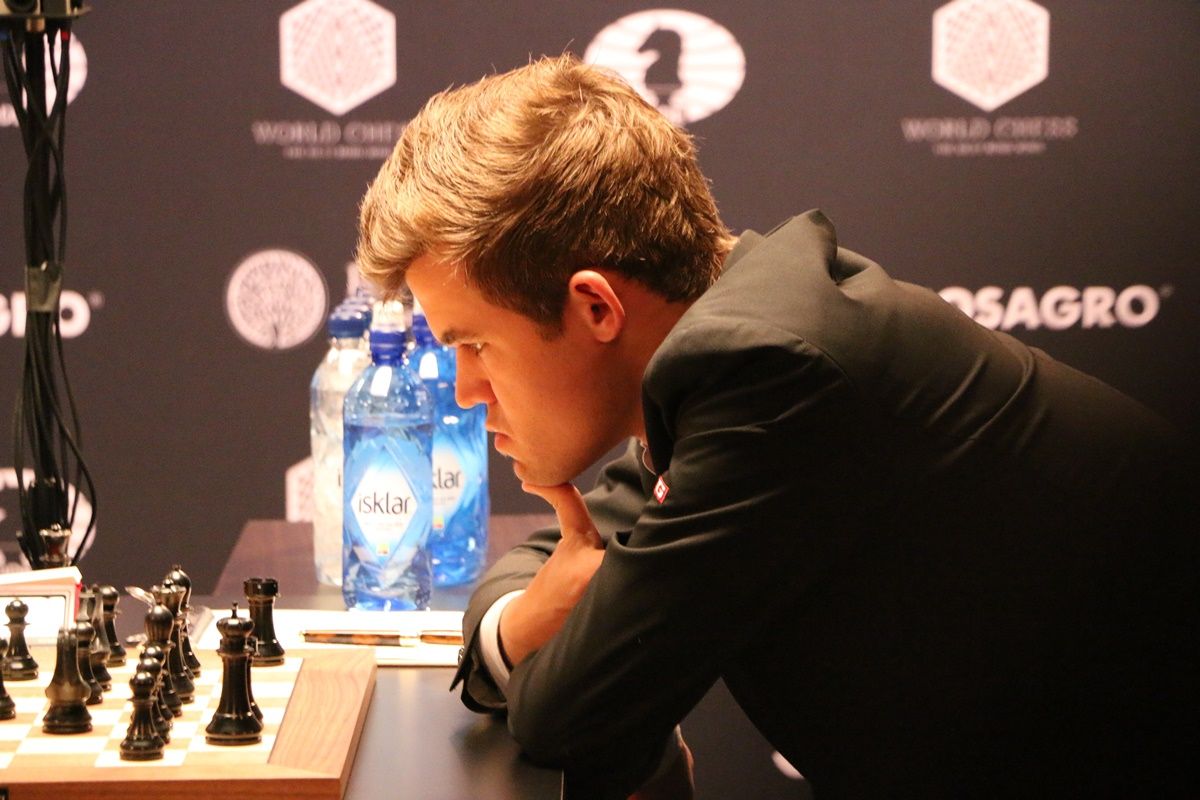
Carlsen's turn to ponder how to crack Karjakin's defensive skills.
Game 5: Karjakin "almost" gets the win.
Game five of the match was a most exciting battle even though the game ended peacefully. First Magnus could have played 14.Bxf7+!, and then Sergey with an opportunity of 19...Qh4! gave the audience hope that there would be a decisive result.

Chess is a struggle...
Game 6: Another Ruy Lopez, another draw.
In game six of the match, the theoretical battle in the Ruy Lopez continued. Both players were in control of the game and nothing got to out of hand. A handshake and draw was the result. Magnus did sacrifice a pawn, but the activity of his pieces gave him full compensation.

Both players stayed in control for game six.
Game 7: No Ruy Lopez, but still a draw.
For the first time in the match, Karjakin played 1.d4, giving 1.e4 and the Ruy Lopez a day off. Magnus employed the solid Slav Defense, and neither player was ever in any real danger.

Magnus Carlsen getting in the zone.
Game 8: Karjakin strikes!
Game eight of the match was all about Karjakin's passed a-pawn. Carlsen tried another off-beat d-pawn opening as in the first round, and Karjakin was able to develop an active position with Black.

Photographers everywhere, but it is the players who are focused!
Game 9: Karjakin's risk-free advantage.
Game nine showed fighting chess in a 74-move battle. The game followed Nakamura's decisive win over Kazimdzhanov for the first 20 moves. Karjakin compromised his king's position to be up a pawn for the entire game, but he could not push home the advantage and the players agreed to a draw.

Karjakin trying his best to to create a decisive lead in the match.
Game 10: Magnus evens the score!
Game ten of the match brought the trademark Carlsen squeeze for which he is known. The game was a heavy maneuvering battle for 75 moves that went into a rook endgame. Carlsen showed determination to even the score and get back in the race!
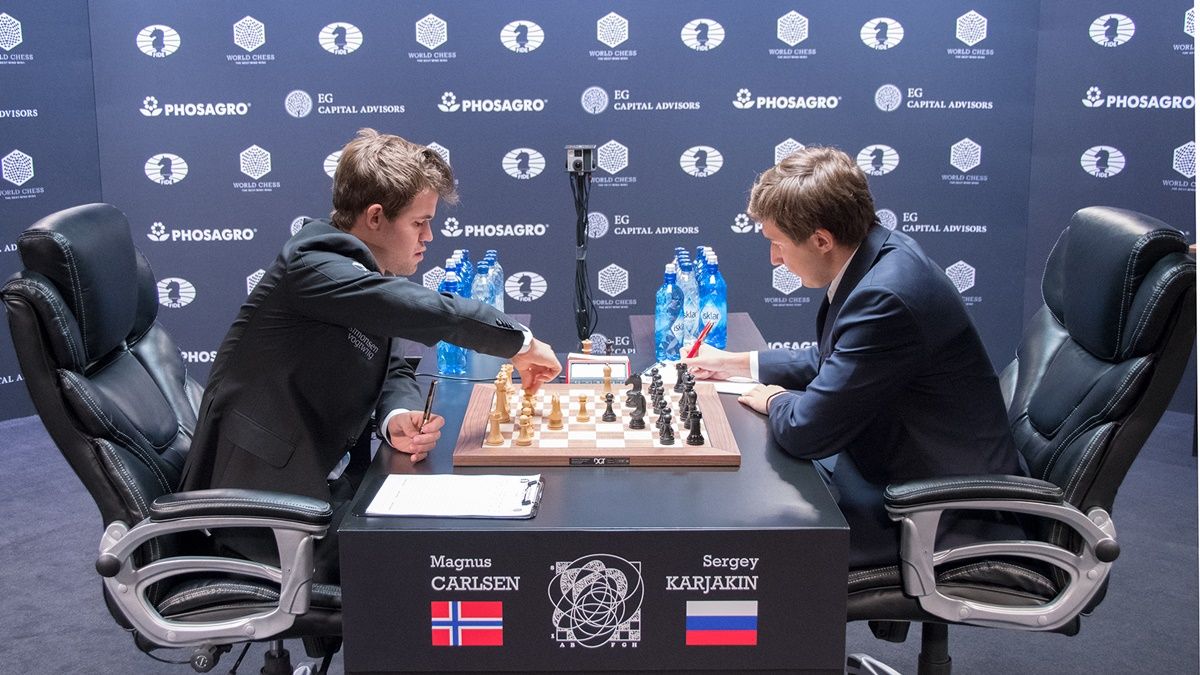
Carlsen showed his trademark style in game ten to bring home the full point.
Game 11: Calm after the storm.
Peace was restored in game 11 of the match after both players chalked up one victory each in previous rounds.
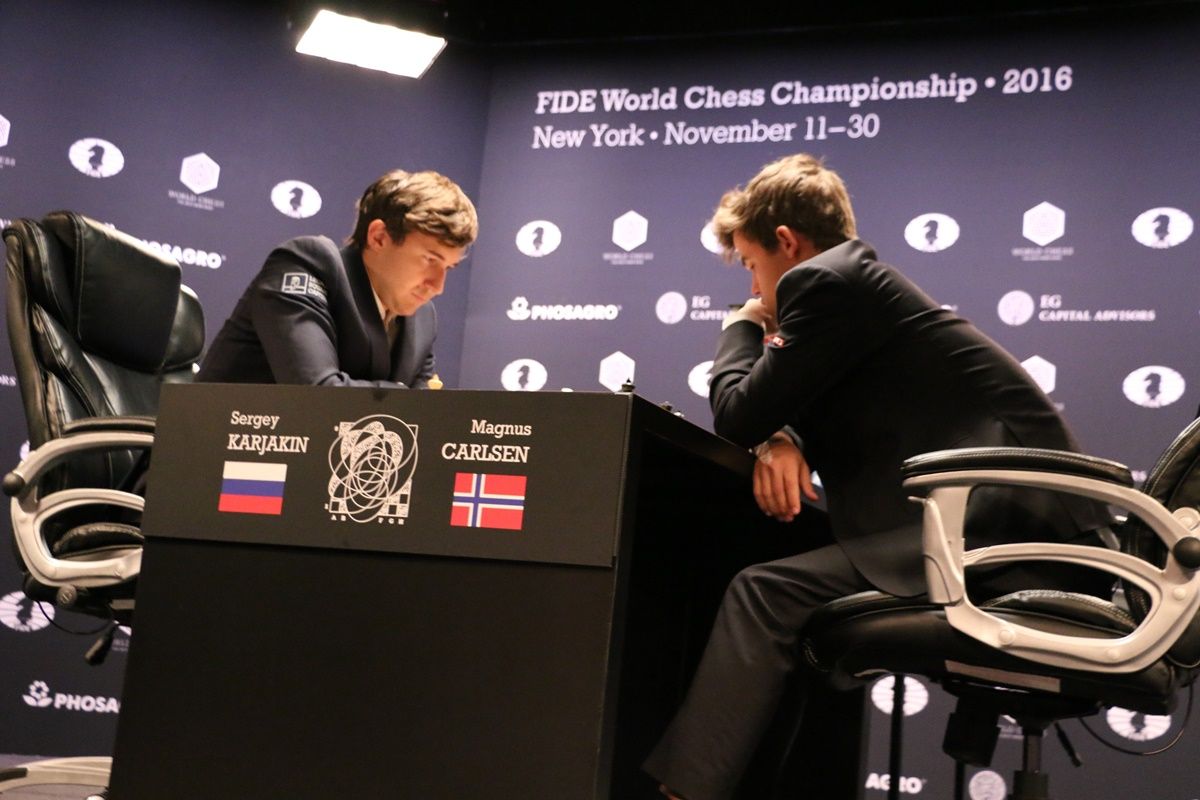
Karjakin and Carlsen during game eleven.
Game 12: The players head to tie-breaks.
Game twelve of the match was the shortest game of the match. The fans were left wondering what happened. Carlsen must have felt that he would have an advantage at the quicker time controls of the tie-breaks and did not mind drawing the final game of the classical portion of the match. Karjakin must have felt confident as well, and the chess world knows that he is no stranger to faster time controls.
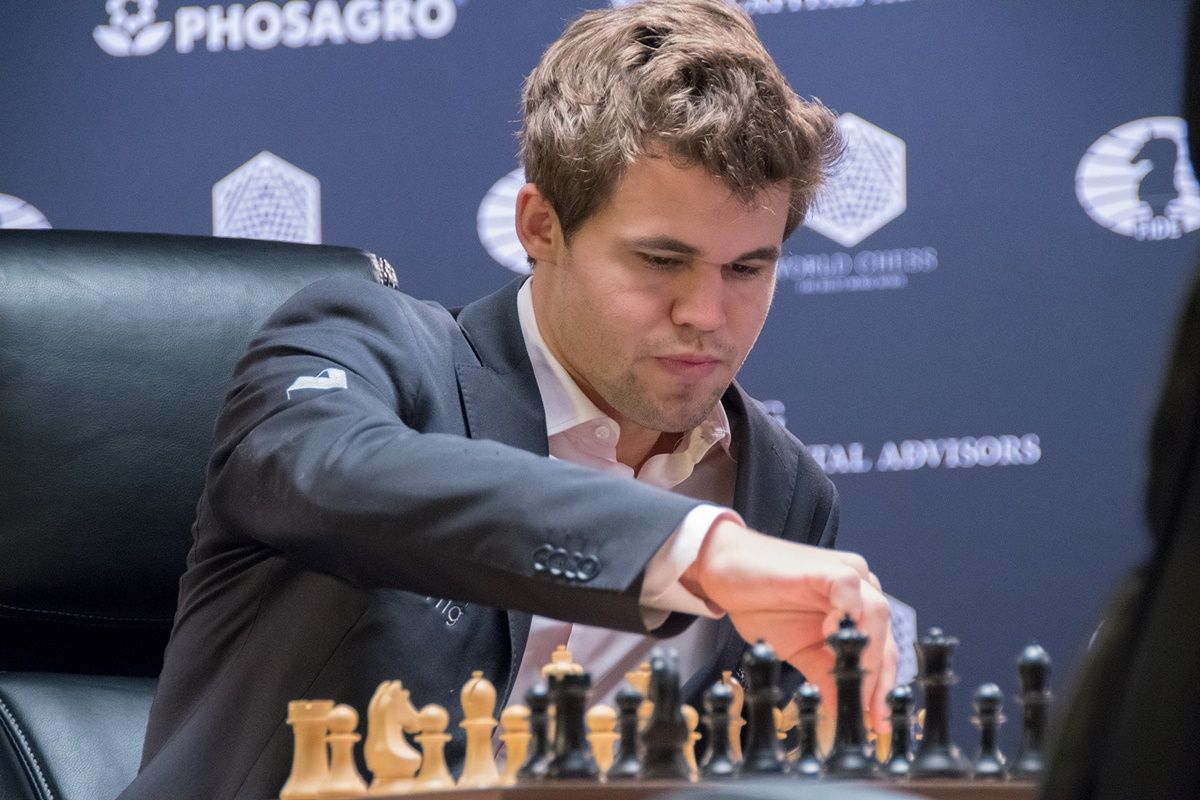
Carlsen and Karjakin draw game twelve and head to the tie-breaks.
Tiebreak Game 1: Entering the rapids.
The first game of the rapids moved to a time control of 25 minutes with a 10 second increment. Naturally, this put the pressure on the players to manage their time. If a winner cannot be determined after four rapid games, the format will move to a blitz time control of 5 minutes plus a 3-second increment.
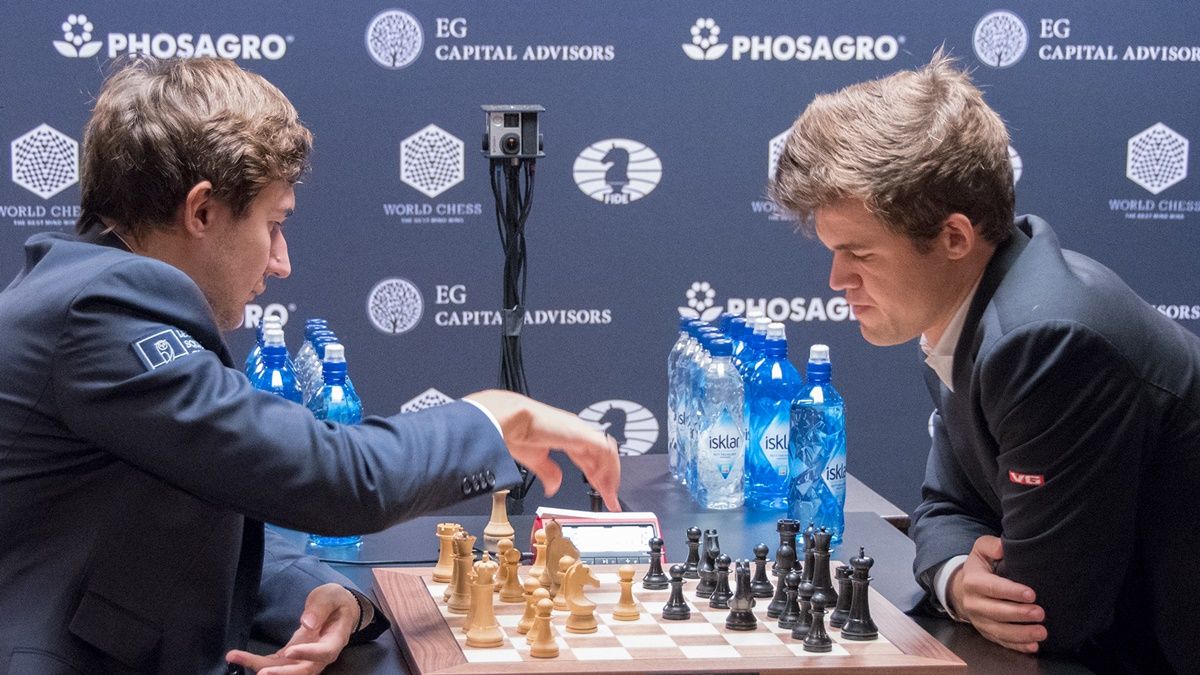
Sergey Karjakin on the move during the first game of the tie-breaks.
Tiebreak Game 2: Back to the Italian.
Magnus had great winning chances in game two of the tie-breaks. The Ruy Lopez had a day off, as Carlsen played the Italian opening. After a series of exchanges, Magnus ended up with two bishops vs. rook and pawn. In the open position, the two bishops allowed Magnus to create pressure for eighty-four moves! In the end, stalemate actually happened on the board resulting in a draw.
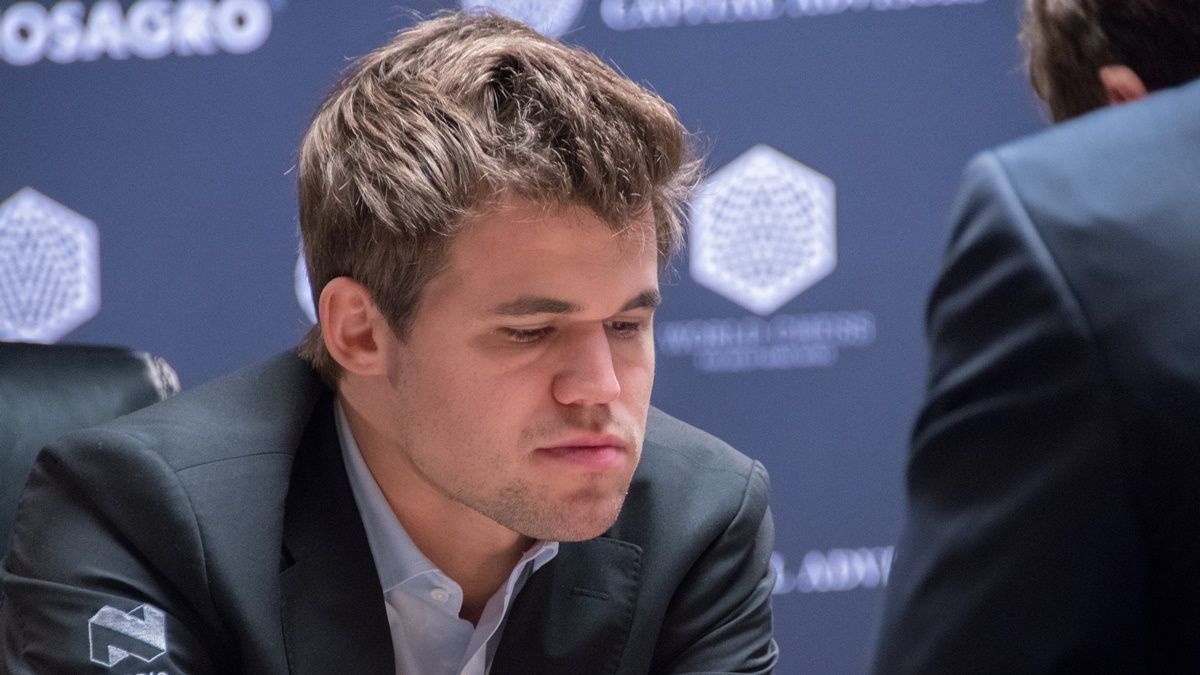
Carlsen during the eighty-four-move rapid game.
Tiebreak Game 3: Magnus turns up the heat!
Game three of the tie-breaks was an exciting attacking game by Carlsen. Black's pieces constantly menaced White's king-side until the pressure finally cracked Karjakin's position.

Karjakin dealing with Carlsen's pressure during game three.
Tiebreak Game 4: Carlsen keeps his title!
In a must-win situation, Karjakin played the Sicilian Defense, and the only Sicilian for the entire match! Carlsen played risk-free chess trying to avoid creating weaknesses. This was a smart strategy with Karjakin in a must win situation to stay in the match. Carlsen's strategy paid off as Karjakin pushed too hard and finally blundered, allowing Carlsen to win the World Chess Championship 2016 title!

A large crowd watched the final game of the match.
Want even more? Check out this material:
FM Mike Klein takes you through every win from Carlsen's first two matches versus GM Viswanathan Anand.
IM Keaton Kiewra takes a look at the other side of the story, giving an overview of Karjakin's outstanding performance in the Candidates'.
GM Jon Ludvig Hammer, compatriot and former second to Carlsen, knows the world champion better than anyone and walks viewers through three reasons why Carlsen will retain his title.






